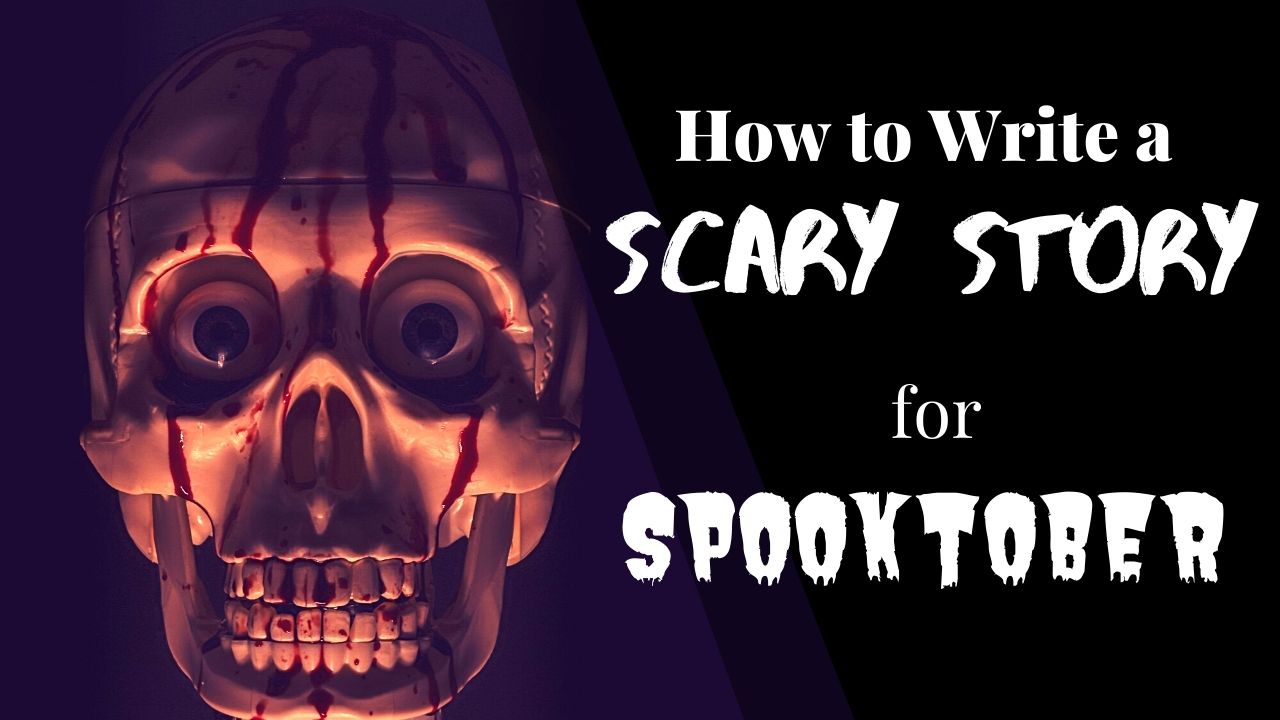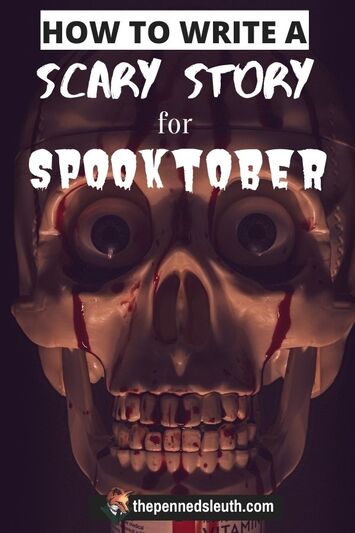Latest Writing Video! |
|
It’s the haunting time of the year, where ghosts, werewolves and all manner of darker beings walk amongst the vulnerable and innocent. Evil stalks the streets, fear builds in every heart, until all are wide-eyed and paranoid. It is Spooktober, the ideal time to write any scary stories that have been lingering in the dark recesses of your mind. Here’s how you can take your idea and turn it into a scary story worth reading! Pin for Later!The MonsterFirst, we need to talk about the antagonist in your story. Whether it is a traditional monster that we have read in fairy tales or the serial killer who is hiding in plain sight, any unpredictable, seemingly unstoppable, the villain will make an excellent antagonist for your story. That is the key to emphasise the horror behind your story. Having an antagonist that seems unstoppable, that wins more times than they lose. Either the antagonist bests the hero through intelligence or power. Typically, an intelligent villain is the most threatening than a powerful one. With an intelligent villain, one still believes there is hope, which makes the sudden victory for the antagonist more shocking. Yet, with a powerful villain, there is a feeling of hopelessness which lessens the fear. If the reader does not expect the hero to win, then the reader will never be shocked or scared about what happens next. It will be exactly as they expect. You can make a powerful antagonist, but it’s easy to cross the line and make a predictable villain. The HeroOf course, you will need a hero in your story. Usually, this is a character that is being punished throughout the story, learning valuable lessons that will help them overcome the antagonist in the end. However, if you don’t want to lean towards a common protagonist such as this, then you can create a hero with less dramatic growth. Make a protagonist a force for good, ultimately conflicting with the terrifying antagonist. There will be more stress on the antagonist, and as such, more pressure for most of the horror to come from the antagonist. You won’t be able to rely on the actions or poor decisions of the protagonist to further emphasise this horror, as you will know that they were always a force for good. Yet, these methods are for stories centred around the protagonists. It isn’t always the case that a scary story is about the protagonist, usually, it is about the antagonist. For this reason, at the very least your protagonist should be likeable, more than three-dimensional. The Quiet MomentsIt’s in the quiet moments that you have the opportunity to create some wonderful scares. When the characters, and thus the reader, are comfortable, it is then the opportunity time to develop a scary scene. One which has them thrown out of their comfort zone with a shocking revelation or a thrilling conflict of some kind. Typically, a death or introduction of a threat helps keep the pace of a story centred around horror, and not small-talk. Unlike with other genres, quiet moments are used in horror for this reason. To make scenes that will shock or scare the reader more effectively. When a reader truly believes a character is safe, that is when the writer should place the character in danger. That will always keep the reader on their toes. The difficulty is keeping this balance. Scare the reader too often, then the scares slowly lose their effect. The same applies to quiet moments. Long quiet moments can break the pacing of your scary story, making the two elements contrast each other in a bad way. Building Suspense and Evoking FearI always encourage research when it comes to writing horror. Explore one’s fear, one’s reactions to what truly frightens oneself. IF you are afraid of something and encounter it, how do you react? How do you speak? What do you think? How do you act? All these reactions are golden for encapsulating the fear your characters could feel in such situations. I particularly recommend researching if you are exploring a fear that doesn’t personally scare you. You might find that the reactions of someone scare of a snake to be very different from a reaction to a spider. Realistically depicting these emotions will help evoke fear. Yet, that fear is only made pure by the suspense that builds it up. Suspense is more essential to a thriller than horror, as horror is typically more in-your-face with what is scary, whereas thrillers are more about the sensation about unknown threats before the threats themselves are revealed. Often, when I am writing scary stories, I switch between thriller and horror, as it typically doesn’t work to combine the two, especially in a short story. When writing a thriller, I build the suspense with insecurity on the protagonist’s part. I hide the threat from sight, yet make them known. It’s much like stepping into a dark room, finding yourself trapped and hearing footsteps that are not your own. You can’t see what is in there with you, and the footsteps echo all around, making it impossible to pinpoint where they are until they are right on top of you. That is a truly suspenseful threat. One perfect for thrillers, and excellent for building suspense and pushing the reader’s imagination to think of the worst. When it comes to writing horror, I evoke fear through what is presented. It could be a horrific action, one cruel violent and sicking, or one bizarre and uncomfortable, ultimately making the character repulsed and horrified. It typically depends on what kind of scary story you are trying to write, both forms can be incredibly effective. ConclusionWhen writing a scary story, I encourage imagination. It is all well and good to find inspiration in the works of others or from other media, but finding that horror within you can help you write it better. You know what scares you. You know how a monster should act to make you feel terrified, how a killer speaks to send a shiver down your spine/ Find your fear and use it. As always… Good day, goodnight and happy writing! Thank You!As a big thank you for reading this article I would like to offer you something for FREE!
A writing course on how to improve your main character! Click here to check out your course. If you are unsure about a course, then you can sign up for free training! Claim your free training here! Thank you for reading! Kind regards Matthew Dewey, Writer
0 Comments
Leave a Reply. |







